Healthy toes and feet are essential for your overall health. They help you move, do your daily chores, and perform physical activities, yet they are often ignored. Have you ever thought about how you can improve the health of your toes and feet?
To maintain healthy toes developing the following habits can help:
- Inspecting your feet regularly
- Keeping your toes and feet clean and dry
- Wearing shoes that fit well
Here is a list of 10 ways to improve the health of your toes:
- Inspect Your Feet Regularly
- Wash Your Feet Daily
- Moisturize Your Feet and Toes
- Cut Your Toenails Properly and Regularly
- Use Toe separators
- Wear Toe Socks
- Treat Your Toenail Fungus
- Protect Your Toes from Athlete’s Foot
- Wear Well-Fitted Shoes
- Prevent And Treat Corns and Calluses
When you are young, you may overlook pain and discomfort for fashion, but as you age, you automatically switch to function and comfort. Nonetheless, make sure you do not wait too long for foot pain and discomfort to turn into more severe problems.
1. Inspect Your Feet Regularly
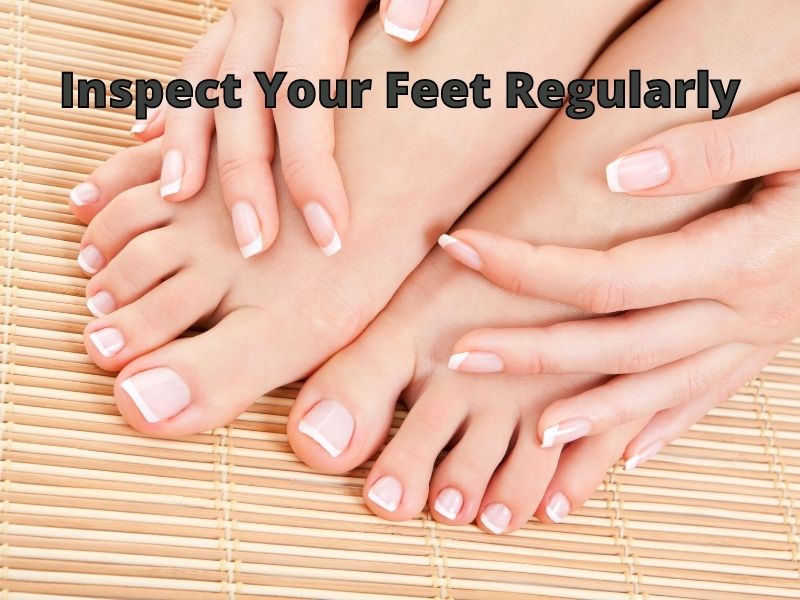
Inspect your feet thoroughly at least once a week. Check your feet for bumps, blisters, bruises, redness, sores, minor cuts, and cracked skin. If you cannot check your feet’ bottom, you can use a mirror to see the cracked skin.
Regularly inspecting your feet can help you treat these issues quickly. You can also avoid certain things that can lead to these problems.
If you feel severe issues or pain that you can’t treat immediately, consult a physical therapist or a doctor. Inspecting your feet regularly is extremely important for healthy toes and feet.
Taking care of your feet is especially important if you have diabetes or persistent foot issues. Your feet owe you a lot, so don’t take them for granted.
2. Wash Your Feet Daily
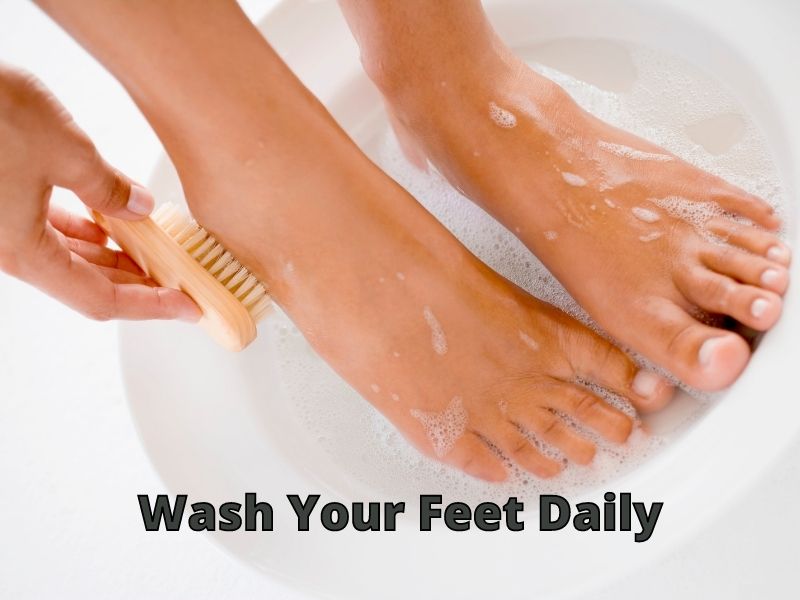
You may wash your face every day, but forget to wash your feet. However, they are equally important. Unfortunately, we often skip cleaning and washing our feet and toes during showers or baths, which is not suitable for our foot health.
You need to wash your feet daily with mild soap and lukewarm water for healthy toes. However, avoid using too cold or hot water since it can damage your skin, especially if you have sensitive skin or diabetes.
Use a soft cloth or sponge and clean between the toes and rinse them thoroughly. After washing, dry your feet completely.
3. Moisturize Your Feet and Toes
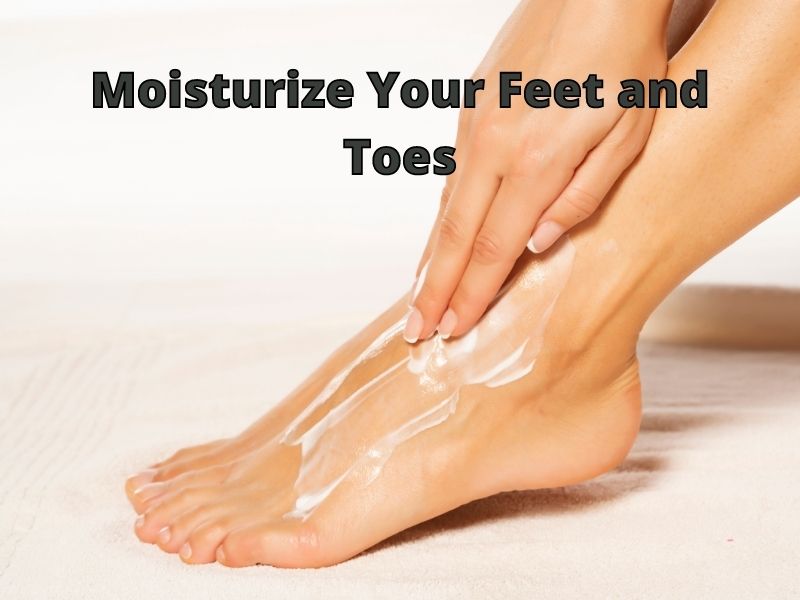
After cleaning and drying your feet, you need to moisturize them. The skin on your feet tends to get dry and sensitive, leading to painful complications. It can also cause cracking and itching.
Moisturize your feet at night with foot cream or a thick moisturizer to keep their skin healthy and soft. You can also exfoliate your feet to remove any dead skin.
To avoid dry patches, apply a thin layer over your toes but don’t moisturize between them. If you have extremely dry toes that cause friction while walking, you can use petroleum jelly between your toes.
4. Cut Your Toenails Properly and Regularly
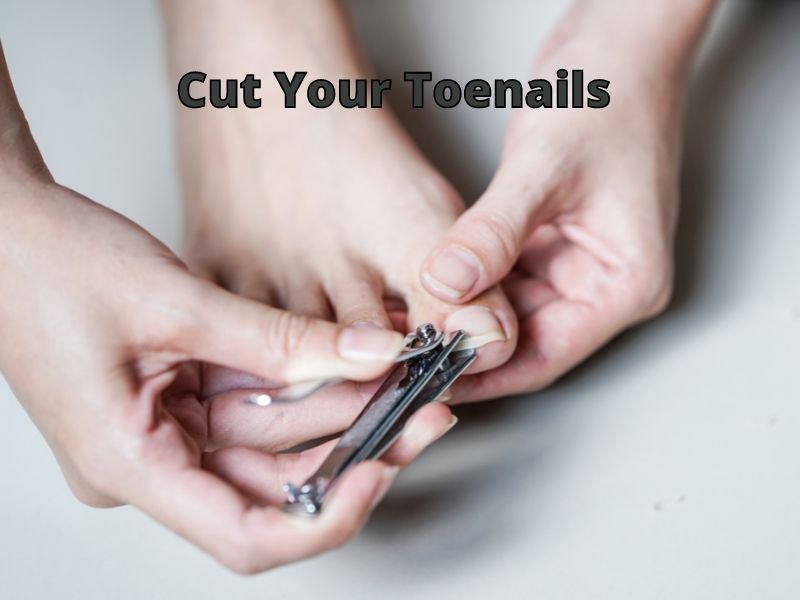
Cutting your nails properly and regularly is essential to prevent painful ingrown toenails.
One of the most common reasons for ingrown toenails is cutting them too short. Toenail clipping is all about cutting them straight but not too short.
“You need to cut your nails straight across to prevent ingrown toenails.”[Natural Therapy of Fungal Nail Disease: Review]. The sides of your toenail can dig into your skin if you don’t trim them straight. This can cause pain and infection.
You need to trim your toenails to a proper length; otherwise, they can become ingrown, causing soreness. Also, when your toenails are cut too short, the skin on the sides of the nail can fold over, causing infection.
Cut your toenails straight and file the edges to avoid all this pain. Go to a podiatrist or a professional nail salon if you can’t do it yourself. Regular pedicure sessions improve your foot health and prevent many foot problems.
It’s best to visit a trained professional and tell them to be careful with your toenails. Also, make sure that they use clean tools, trim your toenails correctly, and avoid filing too much.
Don’t worry if you can’t prevent ingrown toenails. If you have developed any ingrown toenails, just soak your toes in lukewarm water for about 20 minutes. Then, take dental floss and tuck it under the edge of the ingrown nail so that it grows upward and away from your skin. Do it several times a day.
If it doesn’t work or you have diabetes, I recommend seeing a doctor. They will help you remove the affected nail or lift it.
5. Use Toe separators
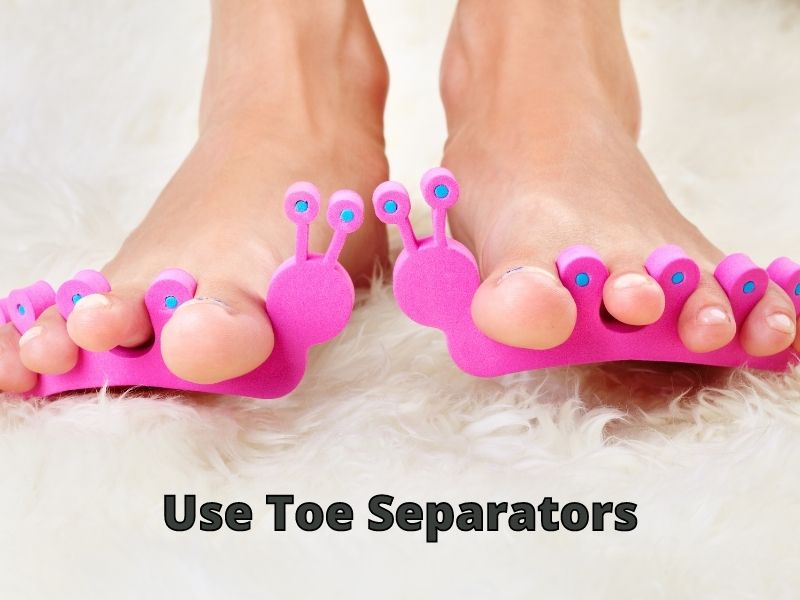
You can use toe separators for healthy toes. Toe separators are made with different materials like cotton, get, silicon and foam. They are available in different thicknesses, depending on your toe needs.
Toe separators allow more space between the joints and separate your toes. They benefit you in several ways:
- Protect your feet from injuries: Toe separators protect your feet from injuries like hammertoes, bunions, and plantar fasciitis. These injuries are mostly caused during running. By separating your toes, toe separators increase the blood flow, enhancing the healing process.
- Reduce Pressure: Our feet are always under pressure. Our feet are constantly under stress whether we wear flip-flops or high heels. You can use toe separators to reduce this pressure and keep your feet at rest for some time.
- Correct toes alignment: Your toes play a major role in the overall foot health. Toe separators help to realign your toes to their proper position. As a result, they help your toes spread out more frequently, reducing the risk of several painful conditions. You can use toe separators for about 30 minutes on the first day and increase it to one hour after using them for a few days.
Benefits Of Toe Separators
- Provide natural arch support
- Reduce irritation and friction
- Improve blood circulation to the plantar fascia
- Treat your foot and toe pains and deformities
- Keep your feet stronger
- Improve your weight distribution and balance
- Enhance your foot muscles development
6. Wear Toe Socks
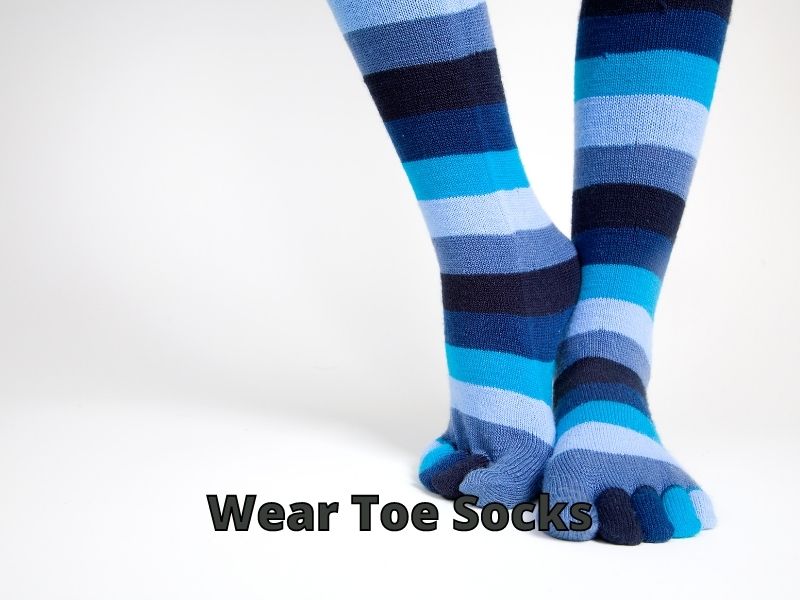
Our feet tend to sweat a lot since they have over 250,000 sweat glands. So wearing toe socks helps to keep them dry [Why Are Socks Important?]. Changing your socks regularly will also improve your foot health.
Your feet are usually warm and moist and are a perfect place for bacteria growth. By wearing moisture-wicking socks, you can prevent bacteria from growing on your feet and reduce the smell.
If you have diabetes, I recommend wearing special socks with extra cushioning to promote good foot health [Why Are Socks So Expensive?].
You need to wear toe socks for healthy toes instead of conventional or regular socks for a comfortable fit. Toe socks hug your foot like a glove, whereas regular socks may pinch your toes together and cause toe deformities.
Toe socks relieve your toes from the discomfort of too-tight sock seams. In addition, these socks allow your toes to move freely without any restrictions.
Toe socks keep your toes dry and cool inside your footwear and maintain a healthier foot environment. In addition, they keep your toes healthier and protect them from fungal infections, blisters, and toe ailments.
7. Treat Your Toenail Fungus
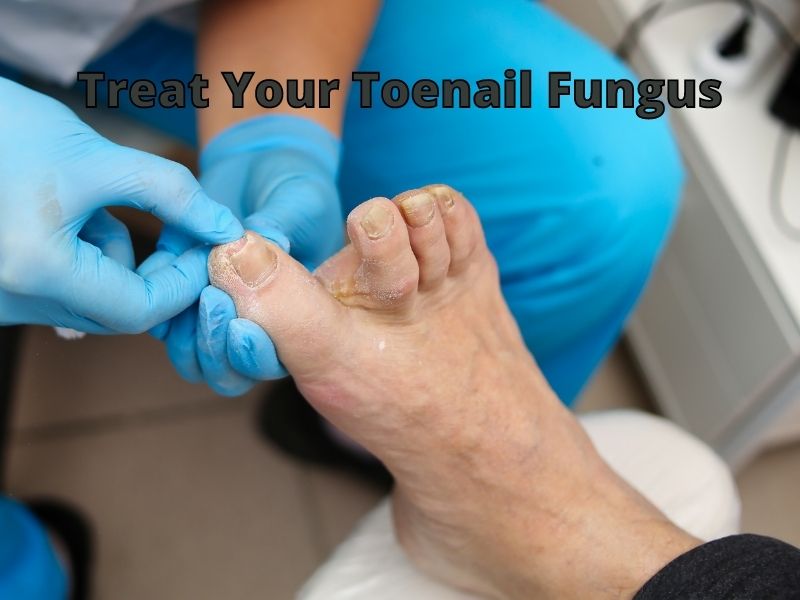
Toenail fungus gives your feet an unattractive appearance. With time, it may spread to other nails as well. For healthy toes, you need to treat your toenail fungus on time.
Toenail fungus is usually caused by damage to your nail that disrupts the nail-skin junction. Toenail fungus may develop because of an ill-fitted shoe or a pedicure session. Getting your toenails lifted or pressed on while running or hiking can also result in toenail fungus.
Toenail fungus is usually caused by a nail-loving fungus. The fungus is attracted to the protein and keratin present in the nail bed. A toenail is ideal for the fungus to attack since it is mostly warm and moist inside your shoes.
“Toenail fungus is also known as onychomycosis. About 40 to 50% of all nail dystrophies are caused by onychomycosis. An adult’s risk of developing onychomycosis is 30 times greater than that of a child.” [Toenail fungal infection]
Unfortunately, toenail fungus is difficult to treat since they recur even after successful treatment. If the fungus persists, I recommend seeing a doctor and asking for an antifungal prescription. Sometimes the antifungal medication even won’t work. In that case, you would be advised to treat your toenail through surgery.
8. Protect Your Toes from Athlete’s Foot
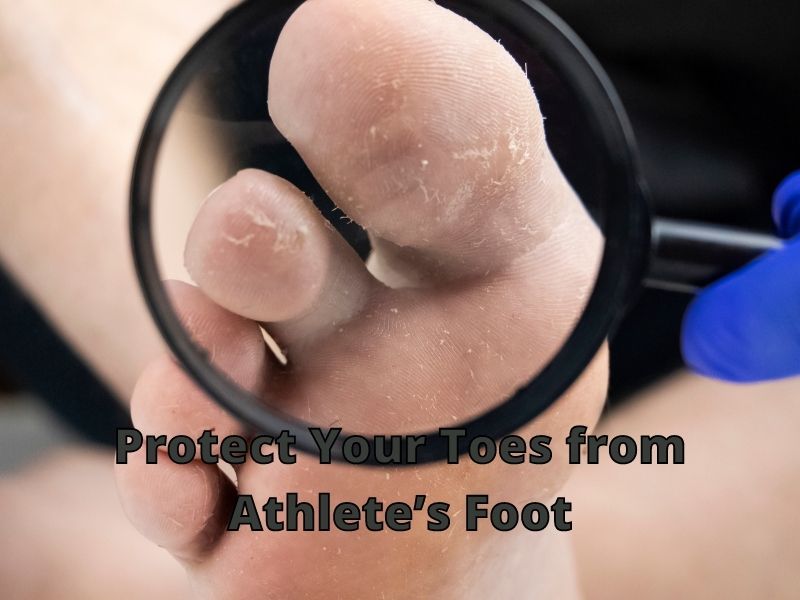
The athlete’s foot is another fungal infection that generally occurs between the toes. It is usually caused by sweat and tight-fitting shoes. Itchy skin or rashes are the most common signs of an athlete’s foot.
Usually, athletes’ foot is caused by a fungus that thrives in moist, warm, and dark environments. Hence, the bottom of your feet and the area between your toes are perfect places for them to attack. As a result, athletes’ feet may irritate your skin and cause a red base with a white rash. Some other symptoms include peeling, itching, and a slight odor.
To avoid the Athlete’s Foot, you need to keep your toes and feet clean and dry, wash them daily, and change your socks and shoes regularly. Try using moisture-wicking socks and breathable shoes. Also, avoid walking barefoot in public areas.
If you have developed an athlete’s foot, treat them with antifungal spray or creams. Additionally, you can spray or powder inside your shoes to kill any lingering fungus.
If none of these remedies work for you, I recommend consulting a doctor. If the infection is left untreated, it may spread to other parts or transmit to other people.
9. Wear Well-Fitted Shoes
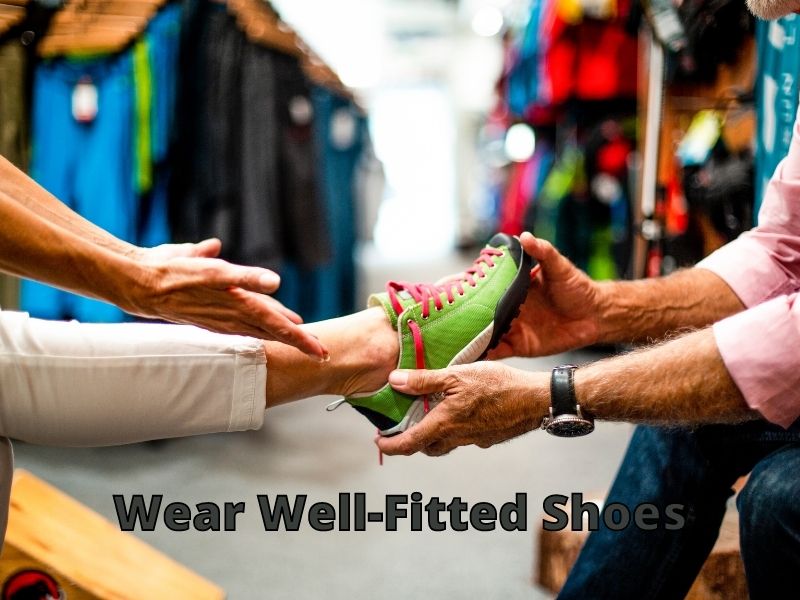
For healthy feet and toes, always wear well-fitted shoes.
Avoid wearing too big or small shoes since they can lead to several foot problems. Too big shoes may cause rashes and blisters. While too small, shoes may cause serious foot issues like bunions, corns, ingrown toenails, and other deformities.
People often have one foot larger than the other, so if that is the case with you, I would suggest trying shoes on your larger foot. If you are looking for shoes, do not go for pretty ones; instead, go for shoes that fit your feet well.
You can wear canvas sneakers or slip-on for everyday use, but do not wear them for outdoor activities like running or hiking since they require foot protection.
Inspect Your Shoes Regularly
- Try to inspect your shoes regularly for any wear and tear.
- Replace your running shoes after it completes 300 miles
- Regularly check your sandals for any broken straps or heels.
- Inspect your everyday footwear. Ensure the upper part is intact, the toe box is undamaged, and the soles are not loose.
- Make sure your shoes fit you well, do not irritate your feet, and support your ankles and feet.
Ill-Fitted Shoes Can Cause:
- Bunions
- Blisters
- Ingrown toenails
- Corns
- Calluses
- Irritation
- Rashes
If you have shoes that hurt your feet, you don’t need to get rid of all of them. Instead, try to limit the time you wear those shoes. A high heel is another major cause of foot pain and negatively affects the foot and spine. Try to avoid wearing high heels or wear them for a limited time. Other shoes to limit wearing time include flat shoes, pointed-toed shoes, flip flops, and worn-out ones.
10. Prevent And Treat Corns and Calluses
The most common cause of corns and calluses is repeated rubbing of toes against an ill-fitting shoe. Corns can form on top, sides, and between your toes, while calluses appear on the sides of your toes or under your feet. These are hard and dead skin patches that hurt while walking.
How To Prevent Corns and Calluses?
You can easily prevent corn and calluses from forming on your feet:
- Wear well-fitted shoes.
- Do not wear high heels daily.
- Wash your feet daily.
- Limit your shoe-wearing time.
- Use gel pad inserts in your shoes to avoid rubbing of feet against your shoes.
How To Treat Corns and Calluses?
Sometimes these corns and calluses are mild and can go away independently. Nonetheless, there are a few things you can do to get rid of them quickly.
- To remove corns and calluses, apply salicylic acid.
- Wear thick socks.
- Use a pumice stone to remove the callus during a shower or bath.
- You can relieve pressure by using corn pads.
- Use foot orthotics prescribed by your physician.
If these remedies do not work, soak your feet in warm water and wait until the affected area softens. After that, use an emery board or pumice stone and remove the dead skin. Remove the dead skin gently; otherwise, you may remove too much, leading to infections.
You can also put lotion, foot cream, or a moisturizer on the corn and calluses and soften the dead skin. If none of this helps, consult a doctor or podiatrist immediately.
Tips for Healthy Toes and Their Benefits
| Tips For Healthy Toes | Benefits |
|---|---|
| 1. Inspect Your Feet Regularly | Prevent your toes from bumps, blisters, bruises, redness, sores, minor cuts, and cracked skin. Help you treat these issues quickly Improve the health of toes and feet. |
| 2. Wash Your Feet Daily | Keeps your feet and toes clean |
| 3. Moisturize Your Feet and Toes | Hydrate and moisturize your feet and toes Prevent your toes from painful complications Keeps your feet’ skin healthy and soft Removes any dead skin Prevents friction |
| 4. Cut Your Toenails Properly and Regularly | Prevent painful ingrown toenails. Prevent your toes from pain, infections, and soreness. Improve your foot health Prevent many foot problems. |
| 5. Use Toe separators | Protect your feet from injuries Provides extra protection to your feet. Prevent your toes from hammertoes, bunions, and plantar fasciitis. Increases the blood flow Reduces foot pressure and keep your feet at rest for some time. Realign your toes to their proper position. |
| 6. Wear Toe Socks | Helps to keep your toes dry and cool Prevents bacteria growth, fungal infections, blisters, and toe ailments. Reduce smelly feet Prevents toe deformities. Relieve toes from the discomfort of too-tight sock seams. Allow your toes to move freely. |
| 7. Treat Your Toenail Fungus | Prevents the spreading of the fungus to other nails. Reduces the risk of surgery. |
| 8. Protect Your Toes from Athlete’s Foot | Prevents the fungal infection spread to other parts or transmitting to other people. |
| 9. Wear Well-Fitted Shoes | Protects your feet from foot problems. Protects your feet from rashes and blisters. Protects your feet from serious foot issues like bunions, corns, ingrown toenails, and other deformities. |
Thanks for visiting helpshoe.com
References

![Healthy Toes [10 Ways to Improve Them]](https://helpshoe.com/wp-content/uploads/2022/04/Healthy-Toes-10-Ways-to-Improve-Them.jpg)